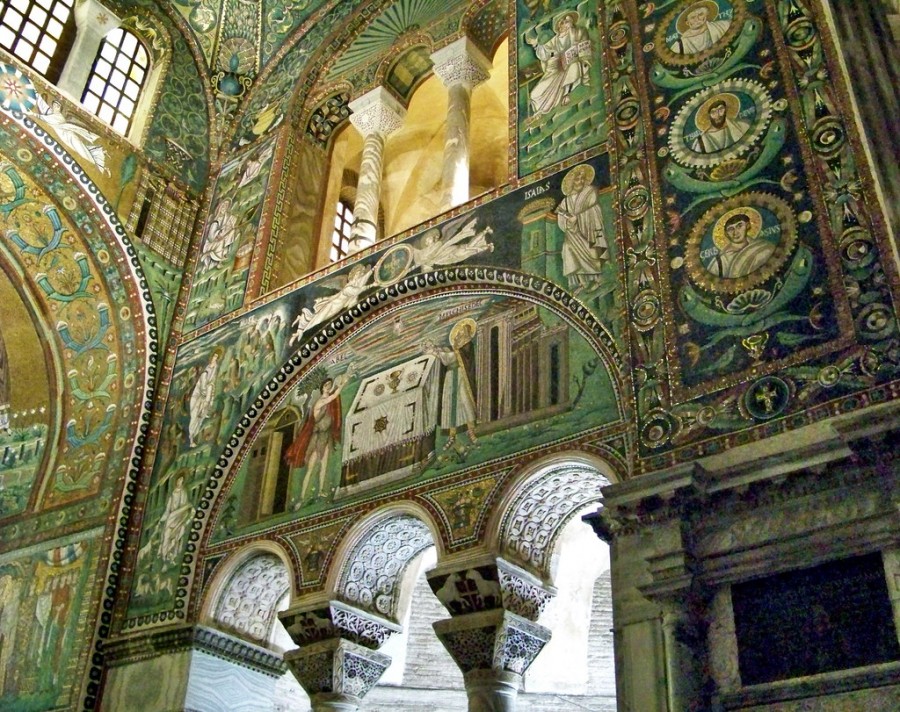San Vitale Basilica (Ravenna, Italy) was built in 526 as a place where visitors can return to the past nearly 1,500 years ago and immerse themselves in the space of art, architecture and religion.
Unlike most cathedrals in Italy, San Vitale has an unobtrusive appearance, consistent with the most basic purpose of a church. But inside this simple look is one of the most glorious examples of early Byzantine art and architecture in Europe.
Like many buildings built in the post-antiquity period, San Vitale is known for its diversity of decorative mosaics. The mosaic here is divided into wall mosaics and background mosaics. The central area is surrounded by two overlapping paths around the altar. A series of mosaics in small semicircular doors at the top of the balcony show the sacrifices in the Old Testament: the story of Abraham and Melchizedek, the offering of Isaac, the stories of Moses and burning bush, Jeremiah and Isaiah , representatives of the 12 tribes of Israel, the story of Abel and Cain … is presented in a very sophisticated, meticulous and elaborate way with bright turquoise, dark green and yellow .

The central dome uses a Western technique using hollow tubes inserted together, not bricks. The surrounding paths and corridors were only arched later in the Middle Ages.
At the top of each semicircular window is a picture of an angel pair, holding a medal with a cross. On the wall in the corners, next to the bars of the door, there is a mosaic of the four Holy Names dressed in white, standing under their symbols (angels, lions, cows and eagles). In particular, the image of the lion deserves attention because of its aggressive behavior.

The stories illustrated on the walls and ceilings of San Vitale express Christian ideology and beliefs during the Justinian period. The exquisite combination between Eastern and Western aesthetics for 1,500 years also contributed to the unique architecture of the church.
Basilica of San Vitale was built in Ravenna in 526 when Ravenna was still under Ostrogoth rule and completed in 547 before the Ravenna Town of East Rome was founded.
The building is designed in an octagonal shape, a combination of Roman elements, including arches, door frames and stair towers; along with Byzantine elements such as polygonal altar placement along with early support pillars. San Vitale has an extremely important place in Byzantine art, because it is the only large church from the time of Emperor Justinianus I that exists almost intact to this day. Moreover, it is thought to reflect the design of the reception room in the Royal Palace of Eastern Rome, a room where nothing remains today.
The Roman Catholic Church has designated the church a “basilica” on October 7, 1960. This is a special honor given by the Pope to a number of churches or holy places. This is one of eight Ravenna buildings inscribed on the UNESCO World Heritage list.























